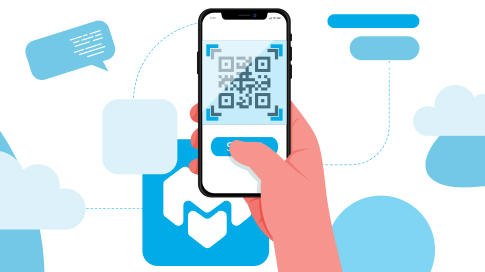Web Services Pentesting – All Things Important
You might wonder what web services are and why they’re so important. Web services are simply a way to make communication between applications more accessible. They provide one-to-many communication across organizational silos, which can save time and money. Web services should constantly be tested for security and functionality to ensure they are safe and working correctly. In this entry, we’ll go through everything you need about web services pentesting. We’ll explain why they’re essential, detail the steps of a web services pentest, and list some top tools and features for doing so. We’ll also discuss alternate measures you can take to secure your web services.
Why Are Web Services Important?
Web services are essential because they allow different departments in an organization to interact with each other. This method may help you save time and money by eliminating the need for duplicate data input and manual procedures. Web services can also enable new business processes that were not possible before. For example, a web service can allow a customer to check the status of an order without having to call or email customer service. Web services can also allow employees to access company data outside the office, such as from a mobile device.
Web Services Pentesting
Web services penetration testing is the practice of examining web applications for security flaws. It is essential to test web applications before they are deployed to find and fix any potential security issues. Web services pentesting can be done manually or with automated tools.
When pentesting web services, it is essential to test for all common security risks, such as SQL injection, cross-site scripting (XSS), and cross-site request forgery (CSRF). It is also essential to test the authentication and authorization controls of the application.
Steps Of A Web Services Pentest
There are several steps that should be followed when pentesting web services:
- First, you will need to gather information about the target system. This information can be obtained from the website, documentation, or by talking to people who are familiar with the system.
- Next, you will need to identify the entry points into the system. This can be done by looking for exposed web services or analyzing network traffic.
- Once you have identified the entry points, you must select the appropriate attack vectors. This is determined by the data collected in the first step.
After selecting the attack vectors, you must execute the attacks and analyze the results. After you’ve completed this step, you’ll have a clearer picture of the system’s security landscape.
Top 6 Pentesting Tools For Web Services
Below are six of the most popular pentesting tools for web services:
- Astra’s Pentest Suite
- WebScarab
- Zed Attack Proxy (ZAP)
- Paros Proxy
- WebSecurify
- Burp Suite
Each of these tools has its own unique features and capabilities, so it’s essential to choose the right one for your needs.
- Astra’s Pentest Suite is a comprehensive pentesting tool that includes many features and tools. It offers both static and dynamic testing, as well as a wide variety of reporting options.
- WebScarab is an open-source web application proxy. It can be used to intercept, inspect, and modify traffic. It also includes several features for auditing and pentesting web applications.
- Zed Attack Proxy (ZAP) is another popular open-source web application proxy. It offers a wide range of features, including a powerful intercepting proxy, an automated scanner, and various tools for manual testing.
- Paros Proxy is a Java-based web application proxy. It can be used to intercept, inspect, and modify traffic. It also includes several features for auditing and pentesting web applications.
- WebSecurify is a web application security testing tool. It offers various features, including automated scanning, manual testing, and reporting options.
- Burp Suite is a comprehensive pentesting tool that includes many features and tools. It offers both static and dynamic testing, as well as a wide variety of reporting options.
Alternate Measures to Secure Web Services
In addition to pentesting, there are other measures that you can take to secure your web services. These include:
- Implementing Web Application Firewalls: A web application firewall (WAF) is a security technology that can defend online applications from assaults. WAFs can be deployed between web servers and the internet or in front of them.
- Web Application Scanners: Web application scanners can be used for vulnerability scanning in web applications. They work by sending requests to the application and analyzing the responses.
- Enforcing Strong Authentication: You can enforce strong authentication for users of your web services. This will aid in the prevention of unauthorized access to the system.
- Implementing Web Services Proxies: As mentioned above, web services proxies can be used to intercept and modify traffic between web services. This can be used to secure communication between different parts of the system.
- Restricting Access to Web Services: You can restrict access to your web services using security controls such as firewalls or access control lists. This can help to keep strangers from obtaining access to the system.
- Monitoring Web Services: You can monitor web services for suspicious activity. This will help you to identify and respond to potential security threats.
- Cryptography: Cryptography is a technology that may be utilized to encrypt communication between two parties. It may be used to encode information so those with the appropriate key can only understand it.
- Intrusion Detection and Prevention Systems: These are used to detect and prevent attacks on computer systems. They work by monitoring network traffic and identifying suspicious activity. IDPs can be used to protect web applications from attacks.
Conclusion
Web services pentesting is the study of web applications for security flaws. It is crucial to test web applications before they are deployed to find and fix any potential security issues. Web services pentesting can be done manually or with automated tools. When pentesting web services, it is vital to test for all common security risks, such as SQL injection, cross-site scripting (XSS), and cross-site request forgery (CSRF). It is also essential to test the authentication and authorization controls of the application.
There are many various tools and features that may be utilized for web service penetration testing. In addition to pentesting, there are other measures that you can take to secure your web services. These include implementing Web Application Firewalls, enforcing strong authentication, and restricting access to web services.




Leave a Reply